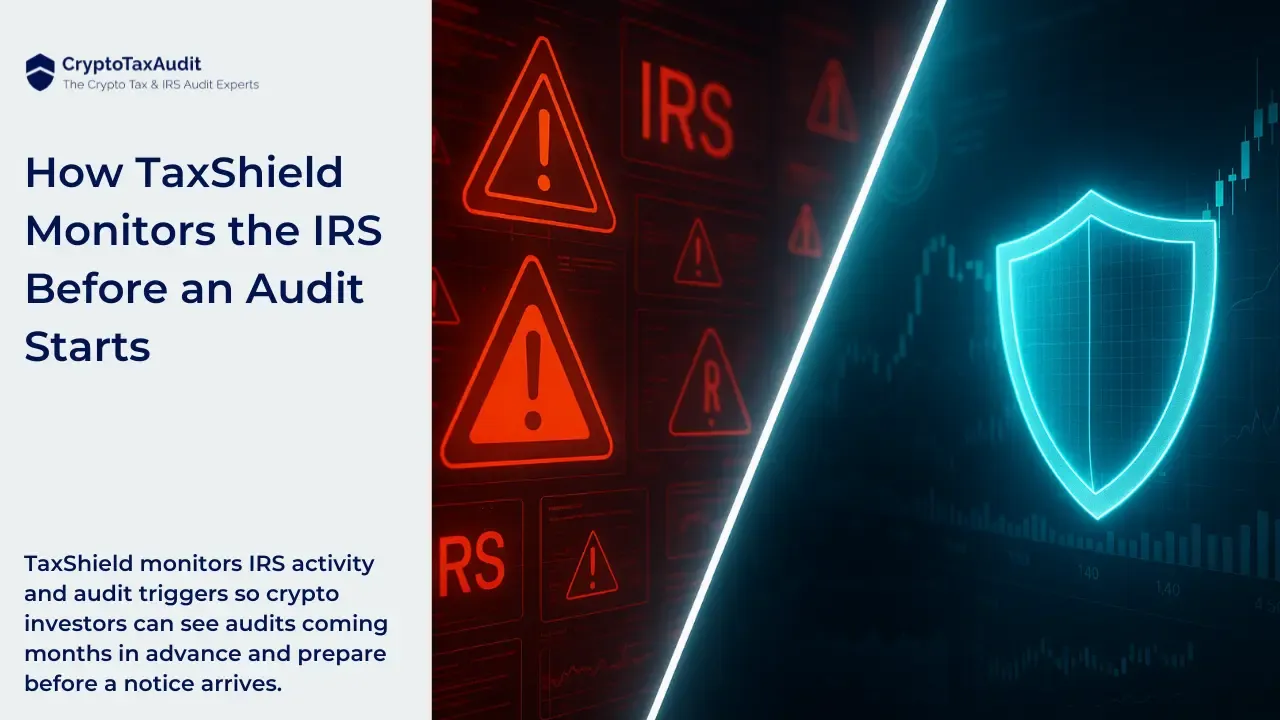
Introduction
In July 2022, Celsius, a prominent name in the cryptocurrency sector, filed for bankruptcy protection, marking a significant event in the crypto world. This move left numerous investors in a state of uncertainty regarding their funds and investments. Fast forward to the recent development: the bankruptcy court has now confirmed a reorganization plan, effectively coming into force on January 31, 2024. A key component of this plan is the formation of Ionic Digital Incorporated, a new Bitcoin mining entity set to play a pivotal role in the restructuring process.
This development raises several questions for investors, particularly those with holdings in Celsius, especially regarding the tax implications of their recovered funds and new assets. This blog post aims to provide clear insights into these tax implications, supported by the expertise of CryptoTaxAudit. As professionals in the cryptocurrency tax domain, we understand the complexities involved. We are here to offer guidance, helping investors make sense of their tax obligations in light of these recent changes.
Understanding the Celsius Bankruptcy Resolution and Recovery Process
The Celsius bankruptcy began with its bankruptcy protection filing on July 13, 2022. This event culminated in a major development on November 9, 2023, when the bankruptcy court confirmed a comprehensive reorganization plan to take effect on January 31, 2024. This plan encompasses the distribution of over $3 billion in cryptocurrency and fiat alongside establishing Ionic Digital Incorporated, a new entity in Bitcoin mining.
Central to this plan is categorizing creditors into 16 distinct classes, each with specific rights and treatments regarding their claims. Particularly noteworthy is Class 5, the general earn claims, comprising taxpayers in the Earn program with claims over $5,000. The total claim value is calculated based on 105% of the value of assets held in the claimant's Celsius account at the time of the bankruptcy filing.
By the fall of 2023, investors faced a critical decision to either remain in the class claim settlement or opt out. Opting out labeled their claim as disputed, making it ineligible for immediate distribution. In contrast, staying in the settlement, the claim value was 105% of the scheduled claim.
Total recovery amounts are equal to 79.20% of the total claim value. The distribution to creditors, especially those in Class 5, unfolds in three primary forms:
Liquid Crypto (BTC & ETH): Representing 57.90% of the recovery, creditors receive a portion of their claim in Bitcoin and Ethereum. The market value of these cryptocurrencies determines the distribution ratio on a specified effective date. The percentage and actual amounts of BTC and ETH given to each creditor depend on their total claim and the value of the cryptocurrencies at the effective date.
Common Shares in Ionic: Representing 14.90% of the recovery, claimants will receive common shares of Ionic, the new Bitcoin mining company. The Odyssey Transfer and Trust Company manages this distribution. The total value of Ionic helps determine the number of shares allotted to each creditor. The share allocation is calculated as a percentage of the creditor's total claim, converted into a specific number of shares based on Ionic's per-share value.
Illiquid Asset Recovery: The final element involves the recovery from illiquid assets, representing 6.40% of the total recovery. This part of the distribution is projected to take several years, relying on the results of ongoing legal proceedings and other activities related to winding down. Creditors can expect to receive a fixed percentage of their total claim value from these assets. However, the exact amount and timing will vary based on the progress of these recovery efforts.
Each creditor's claim is addressed systematically, with various assets allocated based on specific formulas and market valuations at certain points in time. This structured recovery process ensures a fair and orderly distribution of assets among the affected Celsius investors.
Tax Implications
The resolution of the Celsius bankruptcy case presents significant tax implications for its creditors, potentially spanning multiple tax years. These implications largely depend on the nature of losses previously reported by investors and the complex nature of the assets distributed as part of the bankruptcy settlement. The Celsius case strongly resembles securities lending transactions but with digital assets.
As previously outlined, the assets distributed to creditors in the Celsius bankruptcy case are not typically the same as those initially invested. Creditors receive a combination of liquid cryptocurrencies, specifically Bitcoin (BTC) and Ethereum (ETH), and shares in Ionic Digital Incorporated. There may also be potential future distributions from illiquid asset recoveries.
Reassessment of Tax Implications Over Multiple Years Due to Asset Recovery
Two requirements need to be met to recognize a loss from a nonbusiness bad debt on a tax return:
- There must be a bona fide debt
- The debt must be completely worthless
Before the settlement announcement, the total loss for Celcius investors was essentially unknown. Therefore, in 2022, it was too early to determine if there was a loss to report. Investors who erroneously recognized losses in prior tax years due to the decline or inaccessibility of assets with Celsius are now faced with a critical reassessment of their tax positions following the recovery of these assets. This situation necessitates adjusting the tax treatment of the previously recognized losses following the provisions outlined in the Internal Revenue Code regarding the loss claim and its subsequent recovery.
According to the tax benefit rule under IRC Section 111, recovery of a loss that previously yielded a tax benefit must be included as taxable income. The taxable amount of the recovery is generally limited to the portion of the loss that effectively reduced taxable income in the year the loss was claimed. For example, if an investor claimed a $5,000 loss in a prior tax year and subsequently recovers $10,000, the first $5,000 of the recovery offsets the originally claimed loss and is included as income to the extent it reversed a previously realized tax benefit. The remaining $5,000 represents a gain and is taxable in the year of recovery.
Therefore, in scenarios where a loss was fully claimed in a prior year's tax return, the recovery of assets necessitates the inclusion of the recovery as taxable income, both to offset the previously recognized loss and to account for any additional gain.
Capital Gains and Losses
The Celsius bankruptcy case, involving the distribution of assets different from the original investments to creditors, raises specific questions under IRC § 1001(a). This section of the Internal Revenue Code establishes the framework for determining gain or loss from the sale or other disposition of property. According to IRC § 1001(a), gain is the excess of the amount realized over the property's adjusted basis, and loss is the excess of the adjusted basis over the amount realized.
Cost Basis and Holding Period Transfer: The original cost basis and the holding period of assets held in Celsius are typically transferred to the recovery assets. This basis and holding period allocation is a critical factor in determining the tax impact of the distribution.
Recognition of Gain or Loss: IRC § 1001(a) states that gain or loss is realized upon the sale or other disposition of property. Tax law requires a ‘closed and completed’ transaction to recognize a gain or loss. However, the Code does not provide explicit guidance on how to treat the receipt of different assets in a bankruptcy context, like that of Celsius, regarding whether this constitutes a 'closed and completed' for the original investment. Following the open transaction doctrine as it pertains to securities lending, when the open transaction ceases to apply because the identical property was not returned to the depositor, a loss can then be recognized. The amount of the loss would be the depositor's basis in the digital asset that was ultimately lost and not returned. In this case, that would be the depositor's basis, less the total recovery, as discussed above.
The lack of explicit guidance in the tax code regarding the treatment of gains and losses in scenarios like asset recovery in bankruptcy cases can lead to varying interpretations. It is unclear whether receiving different assets should be treated as a disposition event leading to immediate recognition of gain or loss. We encourage you to schedule a consultation for tailored guidance and to ensure optimal tax outcomes in the wake of the Celsius bankruptcy.
Conclusion
The resolution of the Celsius bankruptcy case has important tax consequences for investors. This article has discussed the nuances of the reorganization plan and its implications for the tax responsibilities of investors, particularly concerning asset recovery. The unique nature of the Celsius case, involving a mix of liquid cryptocurrencies, shares, and potential future asset recoveries, requires careful consideration under existing tax laws.
At CryptoTaxAudit, we are committed to providing precise, specialized guidance in these complex tax matters. We invite you to contact us directly for detailed information or to seek personalized advice on your cryptocurrency tax obligations.





